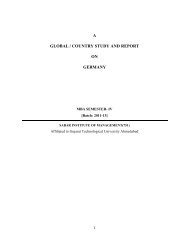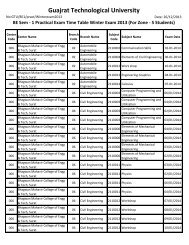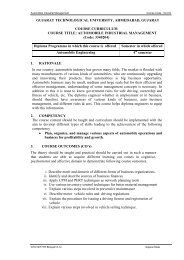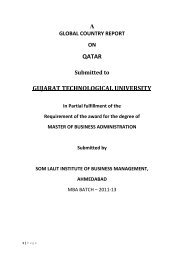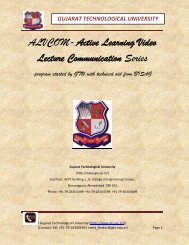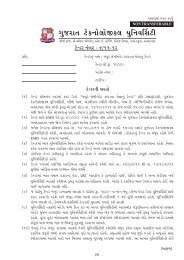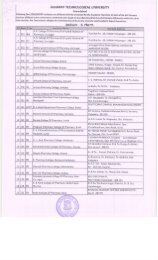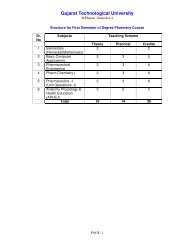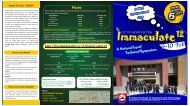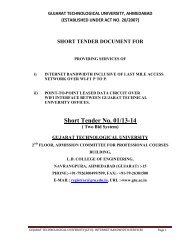708-Chaudhari Technical Institute, Gandhinagar - Gujarat ...
708-Chaudhari Technical Institute, Gandhinagar - Gujarat ...
708-Chaudhari Technical Institute, Gandhinagar - Gujarat ...
Create successful ePaper yourself
Turn your PDF publications into a flip-book with our unique Google optimized e-Paper software.
Import policy of Japan<br />
Postwar era<br />
Japan begins the postwar period with heavy import barrier. In effect all goods<br />
were subject to government quotas, many face high tariffs, and MITI had<br />
authority over the part of the foreign exchange that companies needed to pay<br />
for any import. These policies were justified at the time by the weakened<br />
position of Japanese industry and the country's unrelieved trade deficits.<br />
The main force for change during has been international obligation that is,<br />
reply to foreign, rather than domestic, and force. The result has been a<br />
extensive, unwilling process of reducing barriers, which has irritated many of<br />
Japan's trade partners.<br />
Japan has been a participant in the major rounds of tariff cutting discussions<br />
under the GATT structure — the Kennedy Round completed in 1967,<br />
the Tokyo Round completed in 1979, and the Uruguay done in 1993. As a<br />
outcome of these agreements, tariffs in Japan cut down to a low level. Upon<br />
complete accomplishment of the Tokyo Round agreement, Japan had the<br />
lowest regular tariff level amongst industrial countries—2.5 percent, compared<br />
with 4.2 percent for the United States and 4.6 percent for the European<br />
Union (known as the European Community before November 1993).<br />
1980s<br />
Japan's quotas also drop. From 490 items under quota in 1962, Japan had<br />
only twenty-seven things under quota in the mid-1980s, and that number drop<br />
again late in the decade to twenty-two with proceed agreements planned to<br />
come into result in the early 1990s, which would reduce the number again.<br />
But those products unmoving under quota prove to be highly visible and were<br />
the object of complaint by exporting countries. The drop of controlled things in<br />
the late 1980s resulted from Japan's loss of a GATT case brought by the<br />
United States regarding import limitations on twelve agricultural products. In<br />
adding, heavy weight from the United States led to an agreement that Japan<br />
would end import quotas on beef and citrus fruit in 1991.<br />
107



